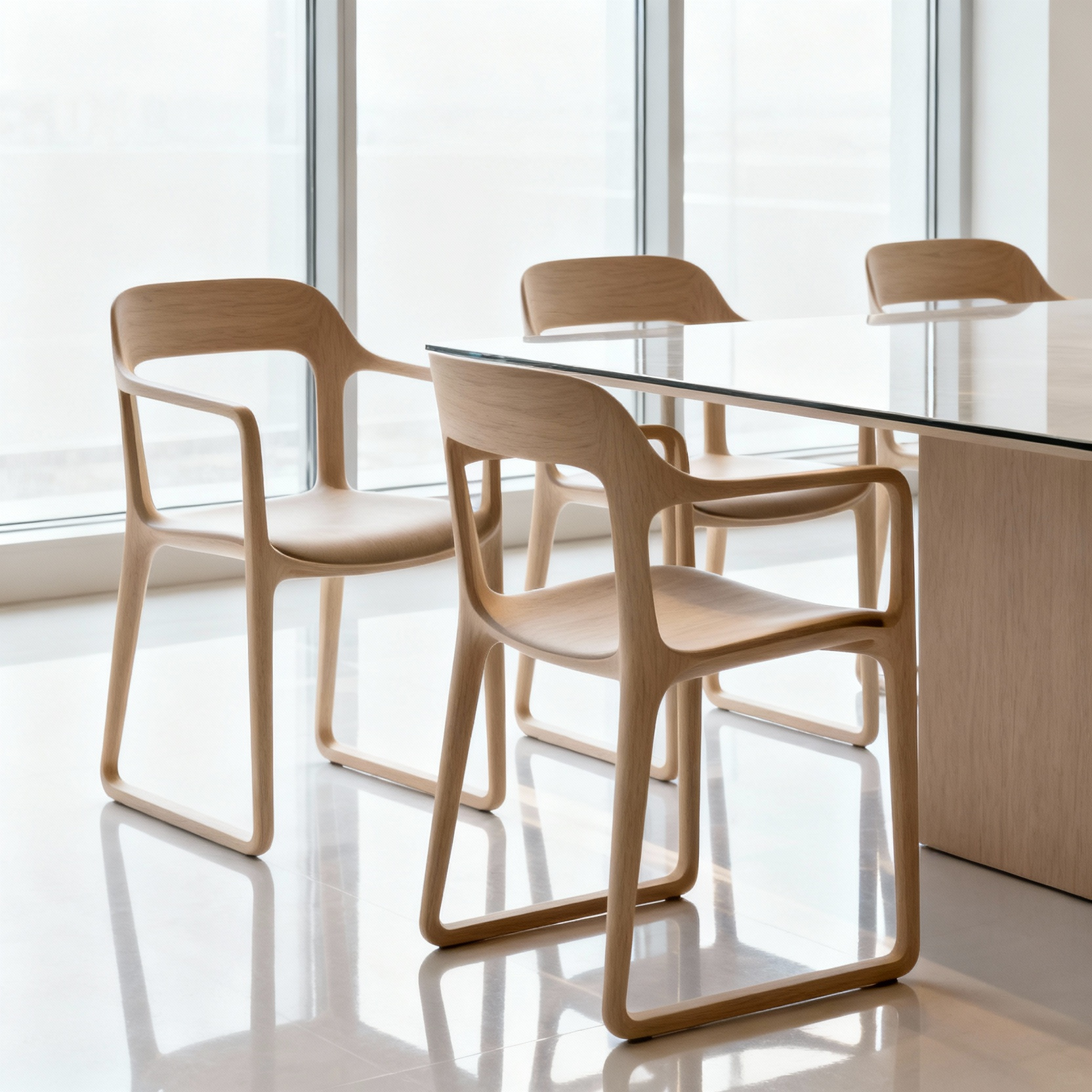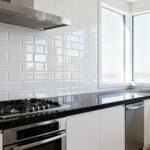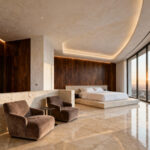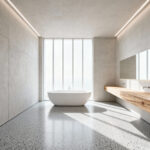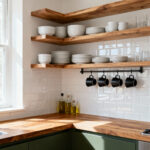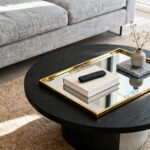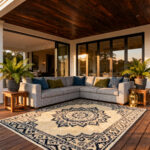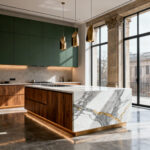Most people believe a modern dining room has to be cold and sterile. You see it everywhere—in magazines and on TV, spaces that look more like galleries than homes. Here’s what they’re not telling you: after 15 years in the home design industry, first as an architectural photographer and now as a writer, I’ve documented hundreds of spaces. The most successful ones aren’t cold at all. They’re intentional. They layer comfort, function, and style in a way that feels both sophisticated and deeply personal.
These 20 modern dining room ideas are organized to walk you through that exact process. We’ll start with the fundamentals—the non-negotiable building blocks of good modern design. Then we’ll build on that foundation, elevating the approach with more nuanced strategies around focal points and storage. From there, we’ll get into advanced tactics like Bespoke joinery and true minimalist discipline, before finally integrating everything into a seamless, masterful design. Forget the myth of the unlivable modern space. Let’s build something better.
Essential Modern Dining Room Fundamentals (Part 1)
Before you pick a single paint color or piece of furniture, you need to understand the underlying principles. This is the foundation. Getting these right makes every subsequent decision easier and more effective. It’s about setting a clear, intentional direction for the room.
1. Opt for Streamlined Silhouettes in Seating
The single quickest way to establish a modern tone is with your dining chairs. Forget ornate carvings or heavy, traditional forms. Modern seating is about clean lines and an honest expression of materials. The form should be light, almost airy, creating visual space rather than consuming it. Think slender metal frames, molded plastics that curve ergonomically, or simple upholstered forms that prioritize comfort without bulk.

To take this a step further, consider how the chair’s silhouette interacts with the negative space around it. From my photographer’s eye, the most compelling compositions aren’t just about the object itself, but the space it carves out. A great modern chair becomes a piece of sculpture, where its legs and back create an interesting interplay of light and shadow. It should complement the table, not compete with it, contributing to a feeling of openness and flow.
2. Integrate a Neutral Palette with Strategic Color Pops
A neutral palette—whites, grays, beiges, even deep charcoals—is the bedrock of modern design for a reason. It creates a serene, expansive canvas that allows architectural details and key furniture pieces to stand out. It’s a backdrop, not the main event. This approach ensures your design feels timeless, not trendy.

But neutral doesn’t have to mean boring. The next step is to introduce texture within that palette: a rough linen curtain against a smooth plaster wall, a honed stone tabletop against matte black steel legs. Then, and only then, do you introduce a pop of color. And I mean a pop. One single, deliberate accent—a vibrant piece of art, a bold accent chair, or even a stunning floral arrangement—creates a focal point and injects personality without disrupting the room’s calm.
3. Leverage Minimalist Lighting for Ambience
Lighting is where you sculpt the mood of a room. In a modern dining room, the fixtures themselves should be understated. The focus is on the quality of the light, not the ornamentation of the hardware. Start with a simple, elegant pendant over the table. Its job is to provide focused light for dining, creating a pool of intimacy.

But one light source is never enough. A truly well-lit space uses layers: ambient light (like recessed cans) for overall illumination, your pendant for task lighting, and accent lights (like wall sconces or picture lights) to highlight art or architectural features. I learned this when photographing interiors—you need multiple light sources to eliminate harsh shadows and create depth. Putting every layer on a dimmer is non-negotiable. It gives you complete control to transition from a bright, functional space to a soft, atmospheric one.
4. Choose Durable, Unadorned Surfaces for Tabletops
The dining table is the anchor of the room. It needs to be a workhorse, but in modern design, its beauty should come from its material, not from decoration. Choose surfaces that are honest and unadorned. Think solid walnut or oak with a simple matte finish that celebrates the grain, or a clean slab of engineered quartz that offers durability without visual fuss.

The material itself becomes the statement. Pay attention to how it interacts with light. A polished surface will bounce light around, creating a brighter feel, while a honed or matte surface will absorb light, lending a softer, more grounded mood. Years of architectural photography taught me that the character of a room often comes down to these subtle choices in materiality. Don’t overlook the edge profile either—a clean, eased edge or a crisp waterfall design reinforces that modern sensibility.
Essential Modern Dining Room Fundamentals (Part 2)
With the core material and furniture principles established, we can now turn to a concept that’s less tangible but far more powerful: the intentional use of space itself. This is what separates amateur design from professional composition.
5. Embrace Negative Space for Visual Calm
The most misunderstood element in design is the empty space. Most people feel an urge to fill it. Don’t. In photography and in design, we call this negative space, and it’s not empty—it’s an active element that gives your furniture and decor room to breathe. It’s the visual pause that allows the eye to rest and appreciate the objects you’ve so carefully chosen.

Practically speaking, this means not pushing furniture against every wall. It means leaving generous pathways. It means hanging a single, powerful piece of art on a wall instead of five smaller ones. What really gets me is when a room is filled with beautiful things but feels chaotic because there’s no visual hierarchy. Negative space is the tool you use to create that hierarchy. It tells you what’s important. By consciously designing the “in-between,” you create a sense of calm, focus, and understated luxury.
Elevating Your Modern Dining Room Approach (Part 1)
Once the fundamentals are in place, it’s time to elevate the design with strategic focal points and integrated solutions. This is where we move beyond just furnishing a room and begin to craft a truly cohesive and functional environment.
6. Curate a Statement Chandelier as a Focal Point
A chandelier in a modern dining room isn’t just a light source; it’s the primary piece of sculpture. It anchors the table and establishes the room’s entire mood. The biggest mistake I see is choosing a fixture that’s too small. It looks timid and gets lost in the space. A good rule of thumb is for the chandelier to be about one-half to two-thirds the width of your table. This ensures it has a confident presence.

Placement is just as critical. The bottom of the fixture should hang 30 to 36 inches above the tabletop—high enough to not obstruct views, but low enough to feel connected to the dining experience. Think beyond traditional forms and consider modern interpretations: geometric structures in blackened steel, clusters of hand-blown glass, or linear LED fixtures that feel like drawings in the air. This single piece has the power to define your entire dining space.
7. Employ Built-In Cabinetry for Integrated Storage and Style
Freestanding buffets and hutches can often feel like afterthoughts, disrupting the clean lines of a modern space. Built-in cabinetry is the superior solution because it integrates storage into the architecture of the room itself. It creates a seamless, uncluttered look that is the hallmark of sophisticated design. Whether it’s a long, floating credenza or a full-height wall of flat-panel storage, built-ins make the most of your space.

To keep it modern, opt for handleless designs with push-to-open hardware or minimalist integrated pulls. The finish is key—a matte lacquer in the same color as the walls can make the cabinetry almost disappear, while a rich wood veneer like rift-cut oak can add warmth and texture without looking traditional. In my professional experience, well-designed built-ins are one of the best investments you can make for both functionality and aesthetic cohesion.
8. Combine Textural Elements for Subtlety and Depth
A common misstep in modern design is creating a space that feels flat and sterile. The antidote is texture. It’s the subtle variation that engages the senses and adds warmth and depth without adding clutter. This isn’t about busy patterns; it’s about the tactile quality of your surfaces.

Imagine the interplay: the cool smoothness of a marble table, the soft nub of a bouclé chair, the slight coarseness of a linen curtain, and the warmth of a low-pile wool rug underfoot. Each element reflects and absorbs light differently, creating a rich visual landscape even in a monochromatic palette. I’ve noticed the most inviting modern homes master this art of textural layering. It’s what makes a minimalist space feel luxurious and livable.
9. Introduce Architectural Millwork for Defined Zones
In an open-concept home, the dining area can sometimes feel adrift. Architectural millwork is a powerful tool for creating definition without building walls. This isn’t your grandmother’s crown molding. Modern millwork is about clean lines and subtle detail. Think about a feature wall of vertical wood slats or minimalist, flat-panel wainscoting that gives the dining area its own distinct boundary.

This technique adds a layer of architectural sophistication and intention. It frames the dining space, making it feel like a curated zone within the larger open plan. A floor-to-ceiling slatted screen, for instance, can provide a sense of separation while still allowing light and views to pass through. It’s an elegant way to create implied rooms, adding structure and character back into an open layout.
Elevating Your Modern Dining Room Approach (Part 2)
As we refine our approach, we look beyond the physical and into the experiential. These strategies focus on integrating technology and art to create a space that is not only beautiful and functional but also responsive and personal.
10. Integrate Smart Technology for Seamless Control
True modern luxury is about effortless control. Integrating smart technology into your dining room allows you to tailor the environment instantly. Start with your lighting. A smart system lets you create “scenes”—a “Dinner Party” scene that dims the lights to a warm, intimate glow, or a “Homework” scene that provides bright, clear light—all with a single command.

Building on that, consider automated window treatments that adjust to the time of day, protecting your interiors and providing privacy on demand. A concealed, high-quality audio system can provide a subtle background score to your meals. When all these elements are connected to a central hub, you can orchestrate the entire ambiance of the room without ever leaving your seat. It’s not about gadgetry; it’s about creating a responsive environment that enhances the experience of being in the space.
11. Design a Cohesive Wall Art Gallery Arrangement
A gallery wall is more than just a collection of pictures; it’s a single, cohesive art installation. The key to a modern gallery wall is a strong organizing principle. That might be a strict grid of identically sized frames for a clean, architectural look, or a more organic “salon-style” arrangement unified by a consistent frame color (like all black or all natural wood) or a common theme in the artwork itself.

Lay everything out on the floor first. This lets you play with spacing and balance before putting a single nail in the wall. What I tell my design professionals and sophisticated homeowners is to think like a curator. What story are these pieces telling together? The goal is to create a singular focal point that feels intentional and composed, not a random collection of images. This is where you can inject a tremendous amount of personality into a minimalist space.
Advanced Modern Dining Room Strategies (Part 1)
Here, we move into the realm of true design discipline. These strategies require a high level of intentionality and a willingness to prioritize quality over quantity. This is about making confident choices that will stand the test of time.
12. Apply the ‘Less is More’ Philosophy to Dining Room Decor
This is perhaps the most famous and most challenging principle of modernism. It’s not about having an empty room; it’s about ensuring every single item in it has a purpose and a presence. It requires ruthless editing. Start by removing everything that is purely decorative but holds no real meaning or exceptional beauty. Ask yourself: does this piece enhance the room, or is it just filling a space?

This philosophy should inform your selections from the beginning. Instead of ten small decor items, choose one stunning sculptural object. Instead of a busy centerpiece, let the beautiful grain of your wooden table be the focus. This approach creates visual calm and allows the high-quality pieces you do have to truly shine. It’s a statement of confidence in your choices.
13. Select Bespoke Joinery for Custom Storage Solutions
Bespoke joinery—custom, built-in cabinetry—is the ultimate solution for storage in a modern dining room. Unlike off-the-shelf furniture, it’s designed for your exact space and your specific needs, resulting in a flawless integration that feels like part of the home’s architecture. There are no awkward gaps or wasted inches.
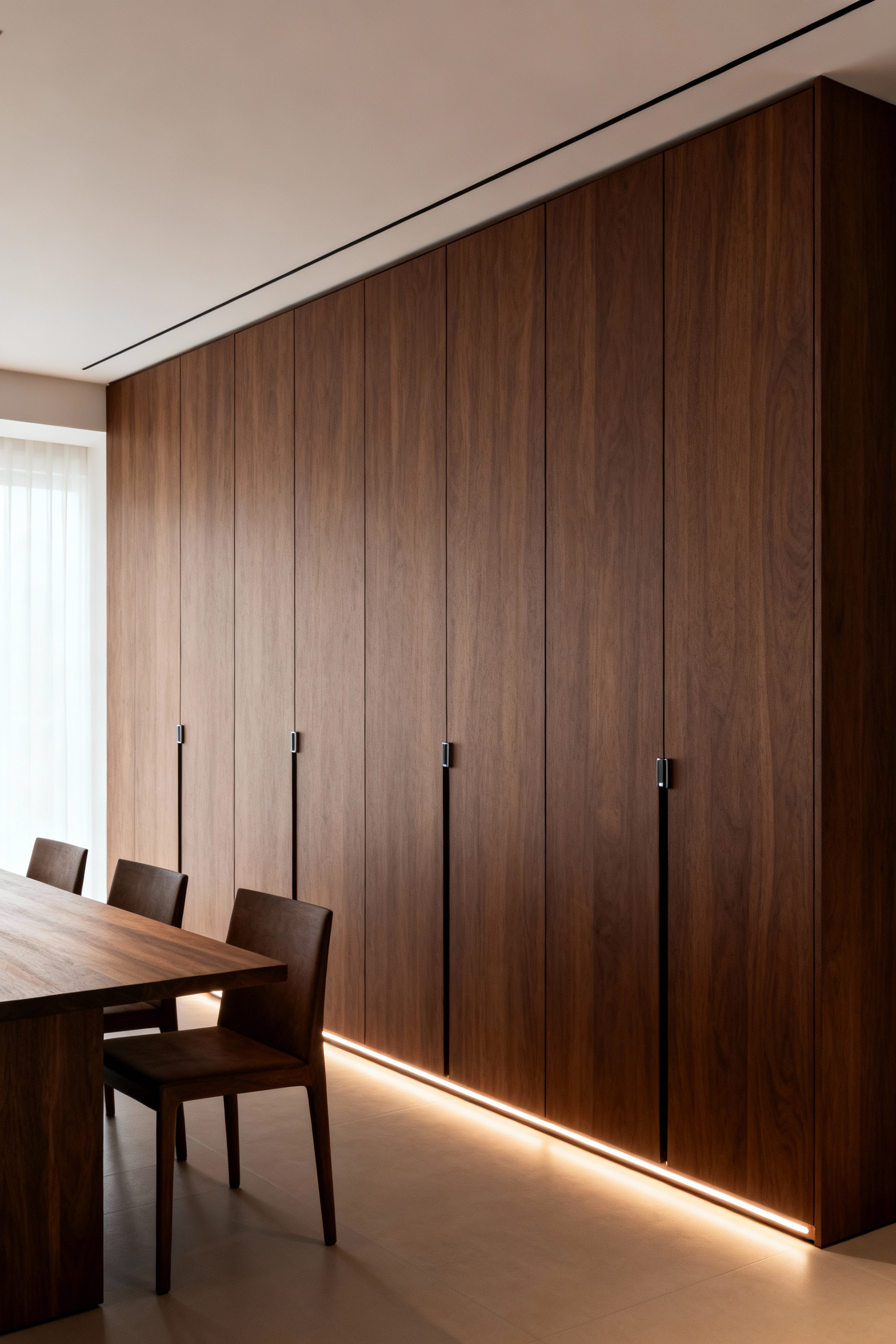
This is where you can create truly unique solutions. Imagine a wall of seamless, handleless cabinetry that conceals a full bar, revealed only when you’re entertaining. Or consider an integrated banquette with hidden storage drawers underneath. From my work in architectural photography, I can tell you that nothing communicates high-end design quite like the perfect, clean lines of well-executed bespoke joinery. It’s an investment, but one that pays dividends in both functionality and quiet luxury.
14. Optimize Layout for Flow and Entertaining Dynamics
A dining room’s layout must support how you actually live and entertain. It’s a dynamic space, not a static photograph. The baseline is ensuring there are at least 36 inches—ideally 42—of clearance between your table and the walls or other furniture. This allows people to move around comfortably, even when others are seated.

But advanced layout planning goes further. Think about the paths of travel. How does a host move from the kitchen to the table? Where do guests naturally congregate for a drink before dinner? You might position a console table as a serving buffet along a clear path from the kitchen, or orient the table to take advantage of a view. The goal is to create a layout that feels intuitive and effortless, reducing friction and enhancing the social dynamics of a gathering.
15. Employ Biophilic Design Principles for Natural Integration
Modern design can sometimes feel disconnected from the natural world. Biophilic design is the practice of consciously reconnecting it. It goes beyond just putting a plant in the corner. It’s about integrating natural light, materials, forms, and views into the very fabric of the space.

Start by Maximizing Natural Light with minimal window treatments. Choose materials like wood, stone, and natural fibers that engage the senses. Orient your dining table to look out onto a garden or a view of the sky. In its most advanced form, you might even consider a living wall as a dramatic, air-purifying backdrop. These elements have a proven calming effect, reducing stress and making a space feel more vital and alive.
Advanced Modern Dining Room Strategies (Part 2)
Our final advanced strategy addresses an element that is often felt but not seen. It’s an invisible layer of design that has a profound impact on the comfort and perceived quality of a space.
16. Implement Acoustic Panel Solutions for Enhanced Comfort
Here’s a secret that professionals know: the sound of a room is as important as its look. In a space with many hard surfaces—common in modern design—sound can bounce around, creating an echoey, loud environment that makes conversation difficult. My work is primarily visual, but a space is lived in, and poor acoustics can ruin the experience of even the most beautiful room.
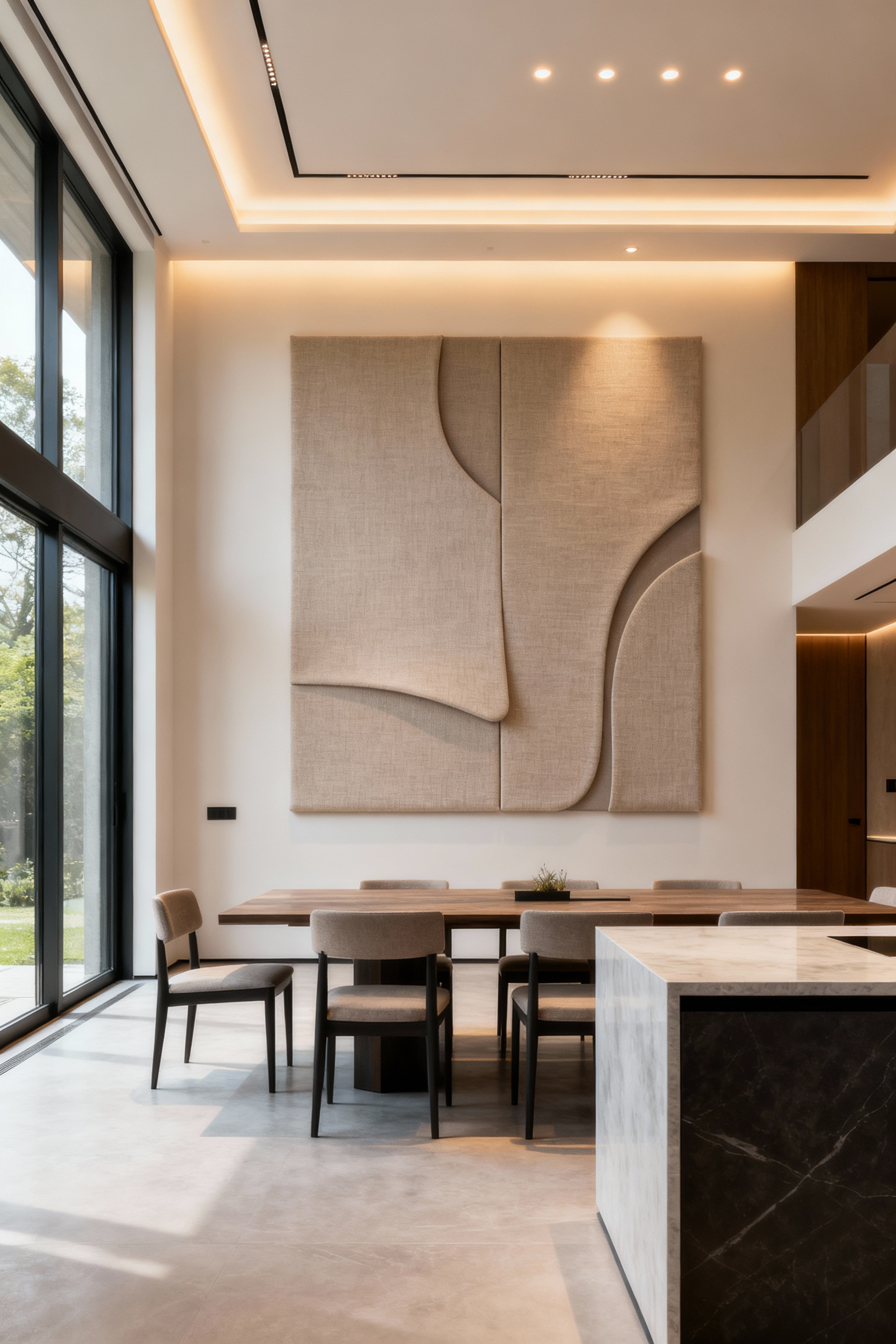
Modern acoustic panels are the solution, and they’ve come a long way from the foam tiles of a recording studio. Today, they are available as beautiful design elements in their own right: felted wool panels in rich colors, perforated wood that looks like a piece of art, or fabric-wrapped canvases that can be printed with any image. Placed strategically on a large wall or ceiling, they absorb excess sound, creating a calm, intimate atmosphere where conversation can flourish.
Mastering Modern Dining Room Integration
Mastery is achieved when all the individual elements we’ve discussed cease to be separate components and merge into a single, harmonious whole. This is about creating a dining experience that feels cohesive, personal, and effortlessly sophisticated.
17. Design with an Open-Concept Flow from Kitchen to Dining
In most modern homes, the kitchen and dining room are not separate entities. To master their integration, you must think of them as two zones within a single, larger space. The key is creating visual continuity. Using the same flooring throughout is the most powerful unifier. It immediately creates a seamless foundation that connects the two areas.

Reinforce this connection with a shared color palette and consistent material choices. For instance, the same wood veneer used on the kitchen island could be repeated in a custom dining sideboard. The metal finish on the kitchen faucets could match the legs of the dining table. This doesn’t mean everything has to be identical, but there should be a clear dialogue between the two zones, creating a holistic design that flows logically and beautifully from cooking to dining.
18. Commission Custom Furniture for Unparalleled Fit and Finish
While there are many excellent ready-made furniture options, custom-commissioned pieces offer a level of refinement that is simply unattainable otherwise. A custom table can be built to the precise dimensions your room requires, maximizing seating without feeling cramped. A bespoke banquette can be upholstered in a specific fabric that perfectly ties your color scheme together.
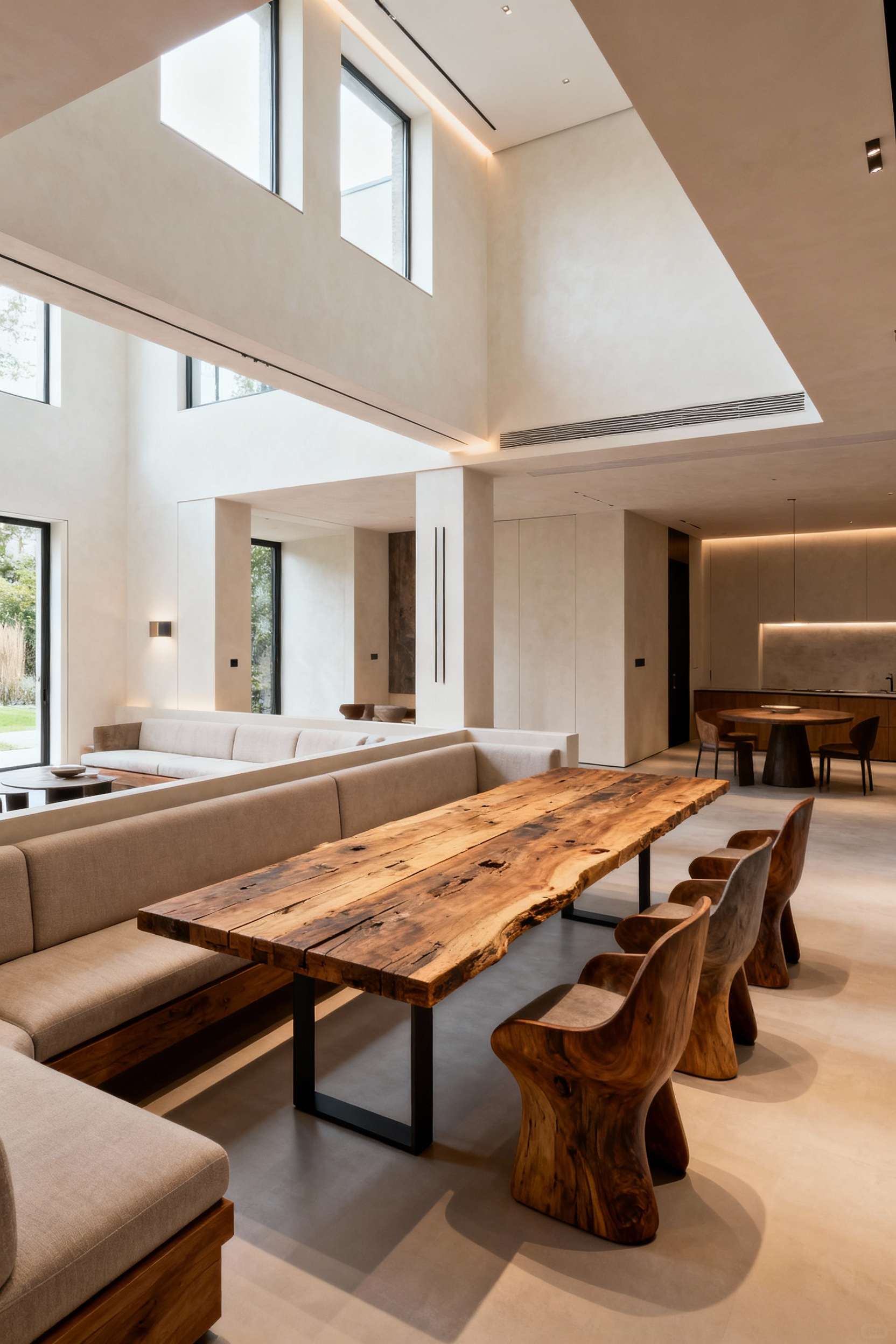
This is about achieving a perfect fit and finish. It’s about controlling the details—the exact wood grain, the specific edge profile, the perfect leg design—to create a piece that is uniquely yours and flawlessly integrated into your space. It elevates the room from a collection of well-chosen items to a truly curated environment, and it’s a hallmark of high-end, personalized design.
19. Integrate Dynamic Lighting Scenes for Versatile Ambience
Building on the idea of layered lighting, the mastery level is creating dynamic, pre-programmed lighting scenes. Using a smart home system, you can design and save multiple lighting configurations that transform the room’s atmosphere with a single touch. This is about designing with light in four dimensions, considering how the space will be used over time.

For instance, a “Sunday Brunch” scene might feature bright, cool-toned light with the shades open. An “Intimate Dinner” scene could dim the overheads, turn on accent lights to highlight art, and cast a warm, focused glow from the pendant onto the table. A “Clean-Up” scene would provide bright, even, functional light. This level of control allows the room to adapt perfectly to any function, making it incredibly versatile and responsive.
20. Develop a Personalized Sensory Experience with Materials and Scent
The ultimate achievement in design is a space that engages all the senses. Think beyond the visual. How does the room feel? The contrast of a cool stone tabletop with the soft leather of a dining chair engages the sense of touch. The gentle acoustics we discussed earlier make the room sound comfortable and intimate.

And don’t forget scent. Scent is powerfully tied to memory and emotion. This doesn’t mean overwhelming the space with artificial fragrances. It could be as simple as the natural smell of a beeswax candle, a vase of fresh eucalyptus on the sideboard, or the aroma of a meal being prepared in the adjoining kitchen. When you consciously curate the tactile, acoustic, and olfactory experience, you create a deeply immersive environment that is the very definition of elevated living.
Conclusion
So, let’s circle back to where we started. The myth of the cold, sterile modern dining room is just that—a myth. As we’ve seen across these 20 ideas, modern design, when done well, is anything but. It is thoughtful, it is warm, and it is deeply human. It prioritizes clarity over clutter, quality over quantity, and experience over excess.
The progression from essential fundamentals to masterful integration shows a clear path forward. This isn’t about chasing a trend; it’s about applying a set of durable principles to create a space that works better and feels better. It’s an investment in your daily life, in the quality of your time with family and friends.
My challenge to you is this: look at your own dining space not just for what it is, but for what it could be. Use these ideas as a toolkit. Be intentional. Be bold. Craft a dining room that isn’t just a place to eat, but a space that genuinely enhances your life and reflects the very best of contemporary living.
